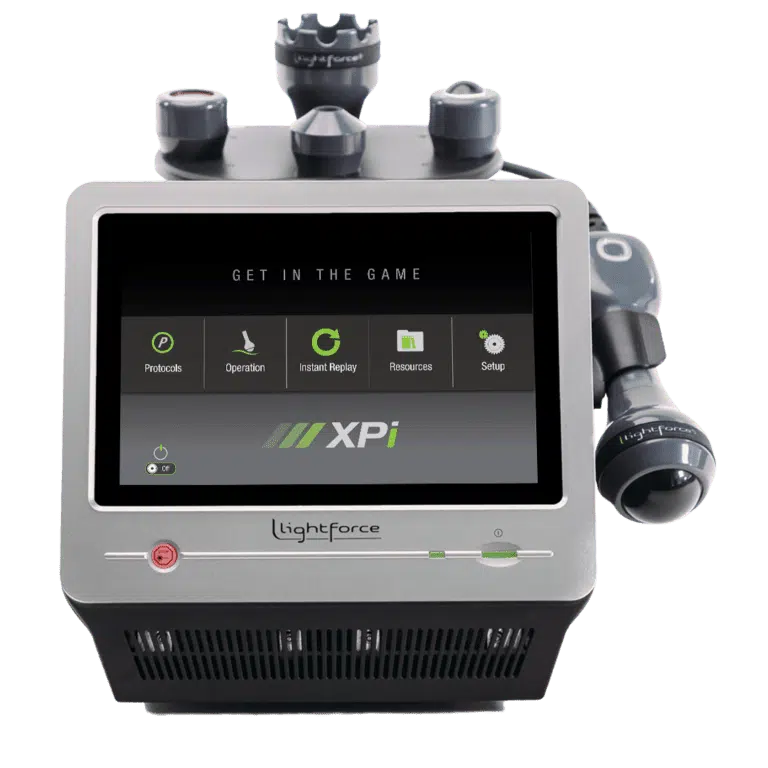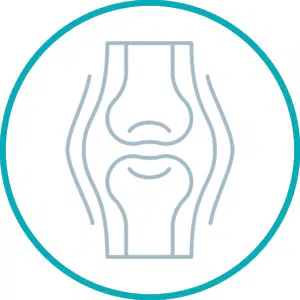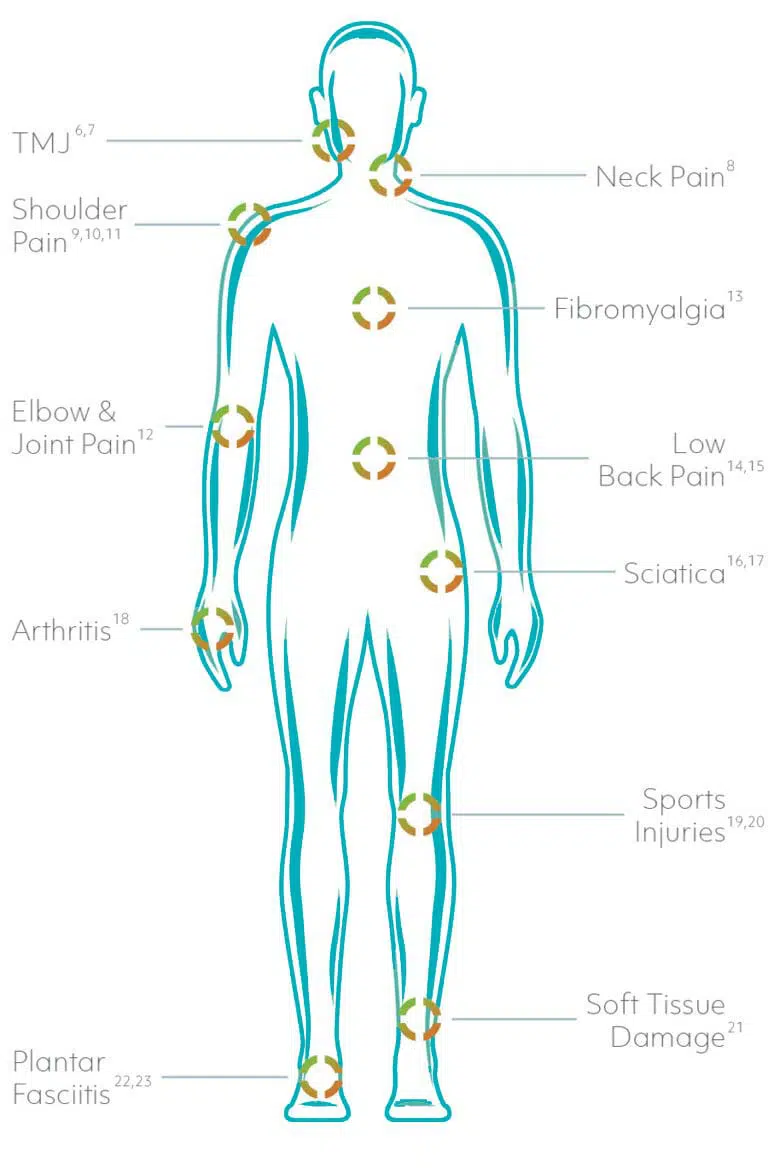Introduction
Before diving into what Laser Therapy is and does, let’s look back at High School science class and remember what is a cell…
Cells are the basic building blocks of all living things.
The human body is composed of literally trillions of cells. They provide structure for the body, take in nutrients from food, convert those nutrients into energy, and carry out specialized functions.
The body’s cells largely replace themselves in total every 7 to 10 years. In other words, old cells mostly die and are replaced by new ones during this time span. The cell renewal process happens more quickly in certain parts of the body, but head-to-toe rejuvenation can take a decade or so. This is called cellular metabolism.
When injured, cellular damage causes an inflammatory response that ends with repair to damaged cells/tissue and is part of the innate immune response.

What is Laser Therapy and How Does It Work?
Laser Therapy is a medical treatment that uses focused light to stimulate a process called photobiomodulation, or PBM. During PBM, photons enter the tissue and interact with the Cytochrome C Complex within Mitochondria. This interaction triggers a biological cascade of events that leads to an:
- Increase in cellular metabolism
- Decrease in pain
- Reduction in muscle spasm
- Improved microcirculation to injured tissue
PHOTOBIOMODULATION:
“LightForce® Laser Therapy works by flooding the tissue with photons, which energizes cells resulting in increased circulation to injured area and ultimately pain reduction, in a process called Photobiomodulation (PBM).”
Treatment Solutions
Laser Therapy is used to treat acute and chronic conditions as well as post-activity recovery. It is also used as another option to prescription drugs, a tool to prolong the need for some surgeries, as well as pre and post-surgery treatments to help control pain and swelling.

Acute Conditions
Laser therapy has been shown to be effective to help treat acute conditions. Bringing pain under control quickly helps the healing process and usually helps promote better outcomes.

Chronic Conditions
With chronic conditions, research has shown that therapy lasers can be used to help combat persistent pain and promote circulation to damage tissues. It can be a powerful, non-pharaceutical solution to help reduce pain without the side effects of medication.

Post-Activity Recovery
LightForce® Therapy Lasers can be found on the side-lines of many pro, college, and Olympic sports teams across the United States and many parts of Europe and Asia (and now in New Zealand at PhysioRx). Laser Therapy has been shown to be effective at improving post-activity recovery times and reducing delayed onset muscle soreness (DOMS)
Safety
LightForce® therapy lasers are cleared by the FDA and adhere to strict ISO standards in order to provide you with a safe, non-invasive treatment option and effective alternative to drugs and surgery
Clinically Used For
- TMJ
- Neck Pain
- Shoulder Pain
- Fibromyalgia
- Elbow & Joint Pain
- Low Back Pain
- Sciatica
- Arthritis
- Sports Injuries
- Soft Tissue Damage
- Plantar Fasciitis

Patient FAQs
How long is a laser therapy session and is there a cost?
Because PhysioRx uses the top of the line LightForce® XPI Therapy Laser that delivers up to 25W of therapeutic power and provides customized treatments and consistent results, a standard laser therapy treatment is usually between 3-10minutes long.
PhysioRx offers a standalone laser therapy appointment for $25 which will take up to 15min, or when the LightForce® XPI Therapy Laser is used as an adjunct to one of our other Physio, Massage or MSK Rehab and Performance sessions, there is an additional $25 charge on top of our standard charges.
What is the purpose of laser therapy?
Laser therapy, or photobiomodulation, is the process of photons entering the tissue and interacting with the cytochrome c complex within the cell mitochondria. The result of this interaction, and the point of conducting laser therapy treatments, is the biological cascade of events that leads to an increase in cellular metabolism (promoting tissue healing) and a decrease in pain. Laser therapy is used to treat acute and chronic conditions as well as post-activity recovery. It is also used as another option to prescription drugs, a tool to prolong the need for some surgeries, as well as pre- and post-surgery treatment to help control pain.
Is laser therapy painful? What does laser therapy feel like?
Laser therapy treatments must be administered directly to skin, as laser light cannot penetrate through layers of clothing. You will feel a soothing warmth as the therapy is administered. Many patients receiving LightForce® Therapy Laser treatments report enjoying the experience, especially when a massage-ball treatment head is used to deliver what is often referred to as a “laser massage.”
Patients receiving treatments with higher-power lasers also frequently report a rapid decrease in pain. For someone suffering from chronic pain, this effect can be particularly pronounced. Laser therapy for pain can be a viable treatment.
Is laser therapy safe?
Class IV laser therapy (now called photobiomodulation) devices were cleared in 2004 by the FDA for the safe and efficacious reduction of pain and increasing micro-circulation. Therapy lasers are safe and effective treatment options to reduce musculoskeletal pain due to injury. The biggest risk to injury during laser therapy treatments is to the eye, which is why certified, protective eyewear is always required during LightForce® treatments.
How long does a therapy session last?
With LightForce® lasers, treatments are quick usually 3-10 minutes depending on the size, depth, and acuteness of the condition being treated. High-power lasers are able to deliver a lot of energy in a small amount of time, allowing therapeutic dosages to be achieved quickly. For patients and clinicians with packed schedules, fast and effective treatments are a must.
How often will I need to get treated with laser therapy?
Most clinicians will encourage their patients to receive 2-3 treatments per week as the therapy is initiated. There is a well-documented support that the benefits of laser therapy are cumulative, suggesting that plans for incorporating laser as part of a patient’s plan of care should involve early, frequent treatments that may be administered less frequently as the symptoms resolve.
How many treatment sessions will I need?
The nature of the condition and the patient’s response to the treatments will play a key role in determining how many treatments will be needed. Most laser therapy plans of care will involve 6-12 treatments, with more treatment needed for longer standing, chronic conditions. Your doctor will develop a treatment plan that is optimal for your condition.
How long will it take until I notice a difference?
Patients often report improved sensation, including a therapeutic warmth and some analgesia immediately after the treatment. For noticeable changes in symptoms and condition, patients should undergo a series of treatments as the benefits of laser therapy from one treatment to the next are cumulative.
Do I have to limit my activities?
Laser therapy will not limit a patient’s activities. The nature of a specific pathology and the current stage within the healing process will dictate appropriate activity levels. Laser will often reduce pain which will make it easier to perform different activities and will often help restore more normal joint mechanics. That being said, reduced pain should not overshadow the advice of a medical professional that understands how the laser will fit into a rehabilitation protocol when deciding how aggressively to push functional limits.
Is laser effective for treating arthritis?
The suffix, –itis comes from the Greek that denotes inflammation. Several studies have shown that laser is an excellent therapy to help address the symptoms related to both osteo and rheumatoid arthritis. While it will not restore damaged cartilage, it can help improve ROM of the affected joints and help reduce pain so that functional levels can be maintained, NSAIDS can be reduced, and in some cases, more invasive procedures can be delayed or prevented.
Is there any literature supporting the use of laser therapy in rehabilitation?
Yes, there is a growing body of peer-reviewed clinical research supporting the use of Class IV, deep tissue lasers as a safe and effective treatment option for a myriad of conditions in rehabilitation. This body of literature includes numerous randomized control trials.
As of 2020, a search on Pubmed.com yielded over 7500 publications on “Low Level Laser Therapy” and over 1200 articles on the more recently coined term “Photobiomodulation”.
